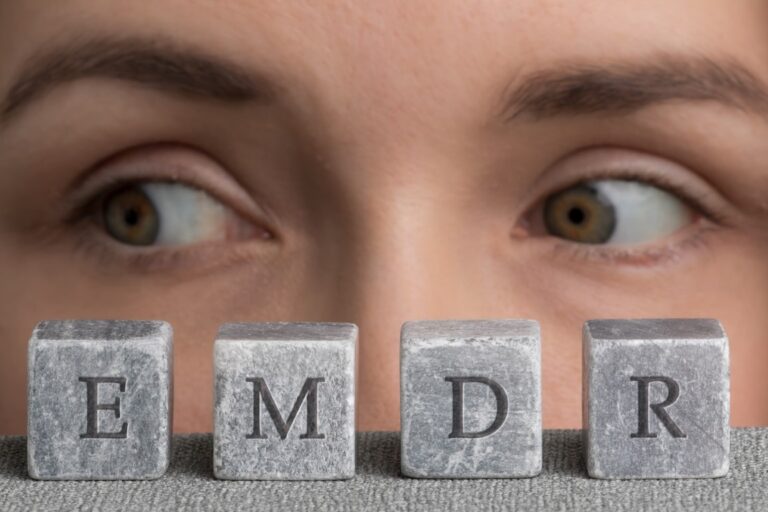Most clinical professionals are guilty of the same thing: Using acronyms and jargon when it comes to talking about their specialities. Sure, when chatting with another therapist, saying something like, “The client really wanted to try DBT,” doesn’t sound the least bit off. Yet, when recommending treatment without explanation to someone looking for help, it probably makes as much sense as reading a menu in a totally different language than your own.
It is imperative to ensure people not only know what these acronyms mean, but that they also have a sense of what each therapeutic style focuses on. While the work between a clinician and client can be dynamic, in that a multitude of therapeutic options may be used, some modalities are evidence-based for specific needs. Understanding those empowers the client to further lead their own healing.
Let’s go through some of our most commonly used evidence based approaches at the Brooklyn Center for Mindfulness and Psychotherapy: Cognitive Behavioral Therapy (CBT), Dialectical Behavior Therapy (DBT), and Acceptance and Commitment Therapy (ACT).
These different therapy techniques were developed for the treatment of specific mental health needs, however there is a lot of overlap among them and they’re often utilized in combination.
What is CBT?
CBT, or Cognitive Behavioral Therapy, is one of the more popular forms of psychotherapy. CBT attempts to explore the connections between a client’s feelings, thoughts and behaviors. In acknowledging these connections and identifying behavioral patterns, the therapist and the client work together to name any patterns, thoughts, or behaviors that are unhealthy, self-sabotaging or limit the client’s ability to meet their life goals. For example, the process of CBT work can support recognizing and changing certain thoughts and feelings, which then can change behaviors and patterns of thinking. Through this process, the therapist and client intentionally come up with different, more helpful ways of thinking and being as it ultimately gives the client a chance to develop new behavioral patterns that fuel their growth. CBT has been shown to be most effective for those working through depression, PTSD, OCD, phobias, anxiety disorders, bipolar disorders, schizophrenia, and eating disorders.
Within the CBT framework exist two other specific models which follow the CBT protocol: Exposure and Response Prevention (ERP) and Prolonged Exposure (EP).
ERP is the gold standard treatment for OCD (obsessive compulsive disorder), phobias and panic attacks. Clinicians work to gradually expose clients to feared stimuli (triggers) and remove the ability to avoid or engage in compulsions.
Prolonged Exposure is the evidence-based treatment for complex trauma and PTSD (Posttraumatic stress disorder). In PE, the therapist and client slowly and safely revisit painful memories to overcome the aftershock of PTSD and trauma so that the client can learn that memories and feelings associated with the experience are not dangerous and can be desensitized.
What is DBT?
Dialectical behavior therapy, or DBT, is a form of psychotherapy that came after CBT. Initially, it was used for clients experiencing Borderline Personality Disorder (BPD). Later, mounting evidence showed that DBT is also effective for folks living with depression, eating disorders, issues with distress tolerance, and substance abuse issues. Recently, DBT has been shown to be effective for those with Perinatal Mood and Anxiety Disorders (PMADs). In DBT sessions, the client and therapist work on finding balance between accepting complex life issues and working to change those issues. This is where the term “dialectical” comes from (dialectical actually means acting through opposing forces). Like CBT, DBT helps clients learn new ways of acknowledging and addressing thoughts and behaviors in order to develop effective ways of coping.
There are four main elements of focus within DBT practice. They are: Mindfulness, distress tolerance, emotional regulation, and interpersonal effectiveness. Another component of DBT practice are DBT skills groups wherein clients and a DBT practitioner can practice the skills learned through DBT in a supportive group setting.
What is ACT?
ACT, or Acceptance and Commitment Therapy, is really helpful in the support of recovery from anxiety disorders, depression, psychosis and many variants of addiction or addictive behaviors. A major goal within ACT practice is the true acceptance of life’s inevitable challenges. There are six core principles within the ACT framework: Cognitive defusion, acceptance, contact with the present moment, the observing self, values, and committed action. The goals of ACT are to use mindfulness and other strategies to increase a client’s resilience, flexibility, and self-awareness. This allows clients to better identify their own truths and values. As clients begin to better understand themselves and their needs, they begin to determine whether or not their behavior is inline with or contradictory to their most authentic selves.
Of course, there are dozens of other meaningful approaches to wellbeing in psychotherapy. As a group practice, we often think about what other modalities are evidence-based and provide supportive models for our clients. Determining which therapeutic approach really depends on the client and their individual needs. Knowing a bit about what is out there is helpful for clients who are seeking out the right therapist for them. As always, when considering CBT, DBT or ACT, looking for a mental health professional who has specialized training is crucial. Asking about their experience and training may make the difference in an empowered and collaborative approach to mental wellness.




